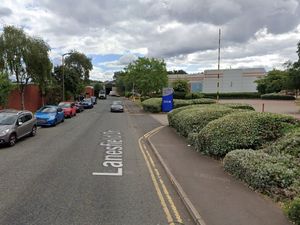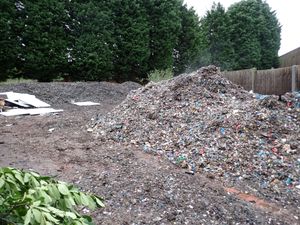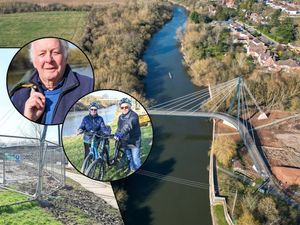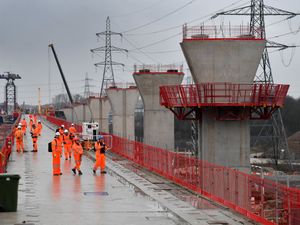Fighting to maintain our green and pleasant land
Tony North looks out the bedroom window of the house where he has lived for decades.
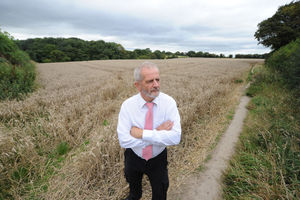
Green fields, albeit slightly muddy at the moment, a hedgerow in the middle distance, and beyond it more fields. It is a view the retired headteacher has treasured for most of his life, but he now fears it could be under threat from the bulldozers.
“As a child I used to play up there, my father used to take me up the cornfields on walks along the paths over there, and I took my daughters over there when they were growing up,” he says. “It would be extremely distressing if they took that away.”
Housing giant Barratt Homes has outlined proposals to build 600 homes on part of the Seven Cornfields, an area of farmland which acts as a green buffer between Dudley and Wolverhampton. More than 7,000 people have signed a petition opposing any development on the green belt land, and the campaign has won the backing of Dudley North MP Marco Longhi and his colleague for Wolverhampton South West Stuart Anderson.
Mr North, who lives in Sedgley, says the coronavirus lockdown has highlighted the importance of green belt areas on the edge of large towns and cities. He believes that the infringement of such areas could have a devastating effect on future generations.
He is not alone. A report published today by the Campaign for the Protection of Rural England (CPRE) warns that a quarter of a million homes are set to be built on land which has been removed from the green belt. The charity says local authority plans for housing on the England’s green belt have more than quadrupled in the past eight years.
The CPRE’s annual State of Greenbelt report reveals there are currently 257,944 homes proposed to be built on land removed from the green belt, a 475 per cent increase on the figure for 2013. And with only one in 10 of these homes considered affordable, the charity says it will do little to tackle the shortage of housing for young people trying get a foothold on the property ladder.
Priorities
CPRE chief executive, Crispin Truman, says this is not only disastrous for the environment, it flies in the face of public opinion.
He says a new poll, conducted by Opinium on behalf of CPRE, shows a surge in appreciation for local green spaces since the first lockdown, much of which are located in the green belt. The poll says more than two-thirds of those questioned think protecting and enhancing green spaces should be a higher priority after lockdown. It also says that 46 per cent are visiting green spaces more frequently since the start of lockdown, while 59 per cent say they are more aware of the importance of green spaces for our mental health and wellbeing.
“Local countryside and green spaces have been a lifeline through lockdown,” says Mr Truman. “Our poll shows massive public support for protecting these places, their importance for our mental health and wellbeing is undeniable. So, to see the growing level of threat faced by the green belt, the countryside next door for millions of people living in our towns and cities, is extremely worrying.”
The CPRE warns that this pressure is only set to increase under changes to the planning system being considered by the Government. The charity claims that a proposed new formula to determine housing supply could lead to an increase in housing on the green belt of at least 35 per cent.
The big bone of contention is the Government’s target of seeing 300,000 new homes built each year to meet housing needs. Housing, Communities and Local Government Secretary Robert Jenrick published a White Paper entitled Planning for the Future in October last year, which aims to streamline the planning process in order to ease the national housing shortage. Its stated aims are not controversial: to ease the housing shortage and boost the post-Covid economy by removing red tape which makes it difficult for developers to build new homes.
Mr Jenrick says the complicated planning system is a barrier to building the homes people need.
“It takes seven years to agree local housing plans and five years just to get a spade in the ground,” he says. “These once-in-a generation-reforms will lay the foundations for a brighter future, providing more homes for young people and creating better quality neighbourhoods and homes across the country.”
Mr Jenrick says local housing plans, which are drawn up by local authorities to decide which areas are considered suitable for development, should be completed within 30 months rather than the present seven years.
Democracy
It also proposes carving areas up into three different categories, ‘growth’, ‘renewal’ and ‘protected’, with a fast-track planning regimes for the ‘growth’ and ‘renewal’ areas.
“Planning decisions will be simple and transparent, with local democracy at the heart of the process” says Mr Jenrick. He says they will also create thousands of jobs, and make it easier for small building companies, without the resources to challenge the planning authorities, to compete with the larger companies.
The CPRE is unconvinced, fearing the changes will simply make the planning system less accountable. It is particularly worried about the relaxation of planning regulation ‘growth’ areas, which are likely to include greenfield areas on the edge of major towns or cities – just like the rural fringes between Wolverhampton and Dudley.
The charity also argues that the biggest obstacle to the Government meeting its target of 300,000 homes a year is not a shortage of sites where permission has been granted, but rather developers deliberately sitting on these sites to control supply and thus inflate house prices.
It also points out that of the developments planned for green belt land between 2015 and 2020, only 10 per cent were for what is deemed ‘affordable housing’.
“On this trajectory, we risk losing ever more green belt while having no impact on the housing crisis and providing homes local communities are able to afford,” the CPRE warns.
Mr Truman says existing planning laws provide vital protection to green spaces, and the focus should be on providing more incentive to redevelop brownfield sites.
“The Government can and must act to stop the loss of green belt and ensure greater access to nature and green space is at the heart of our planning system,” he says. “This can be done by making best use of land that’s been built on previously before even considering development on the green belt. The public is crying out for more access to nature, green space and countryside – it’s time ministers realised this and put people and nature at the heart of their changes to the planning system.”

